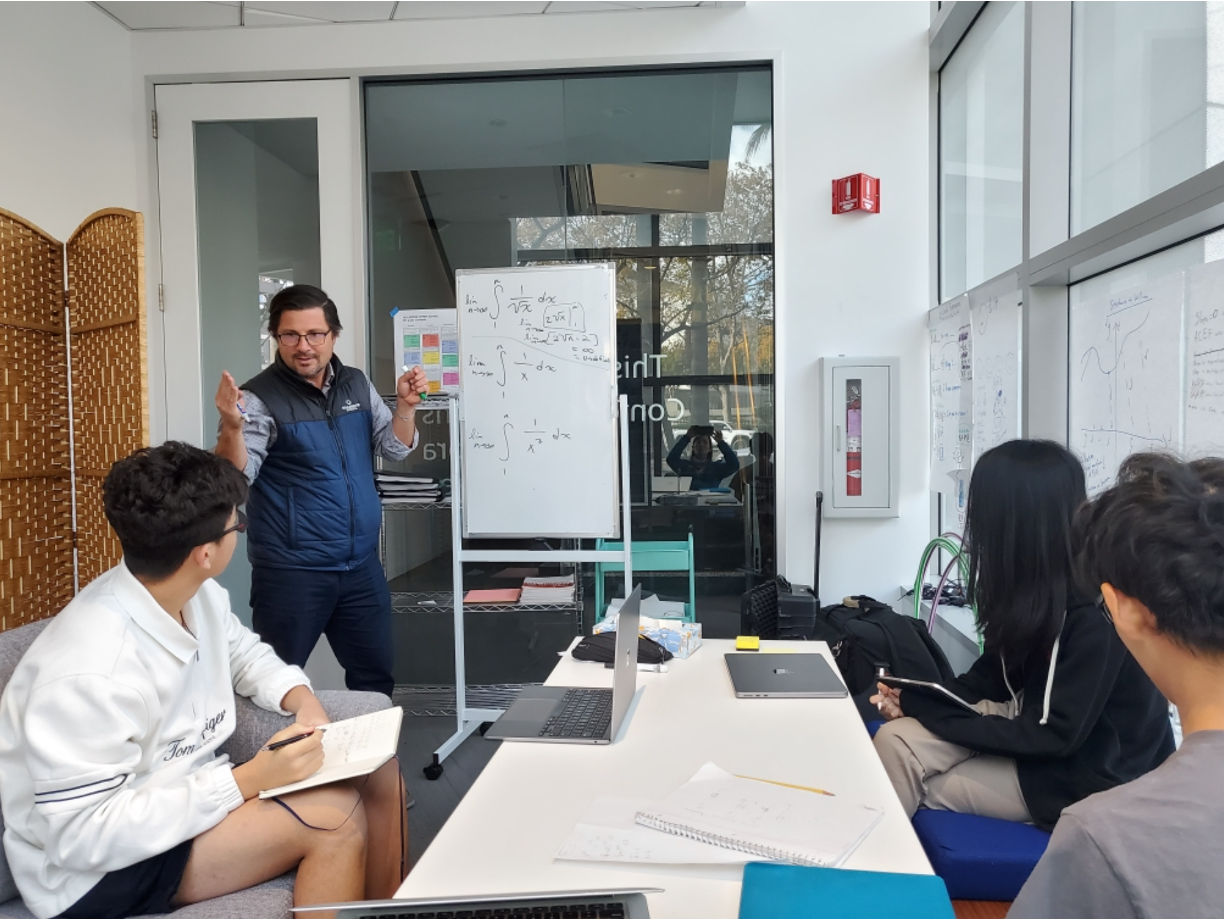“I love them. I love rhombuses.”
How can you find a point that’s three times farther from the origin (0,0) than (2,3)?
Are there multiple solutions?
And could you describe the configuration of all possible solutions?
These 9th graders can! 9th grade Mathematicians continued their spiraled study of vectors, coordinate geometry, and algebraic problem-solving, with a focus on distinguishing between point-slope form, standard form, slope-intercept form and parametric form; they used each form based on the problem context or what is known vs. unknown. Students share responsibility for presenting their work on homework problems, critiquing their own and others’ reasoning, and asking questions. They joked as they took notes on one particularly tricky problem: “These will be for a quiz I have in college!”
These (notes) will be for a quiz I have in college!
Next door, a group of 9th Grade Calculus students are “trying to prove Euler’s Identity.” Wanting to solve for e^(iπ), they started with e^(ix). “We wrote it out and saw that every other term matched with all the sin(x) terms… We then knew it repeats itself after every 4 times, and that it’s similar to sine of x but not totally the same. Then we saw if we [multiply] i by sine of x it would give us all the remaining terms…”
As they pursue their study of Taylor Polynomials (approximations of a function that improve as n increases), they use what they already know about integrals to find patterns that help them approximate the rules their teacher will later refine. Whatever level of math our 9th graders are ready for, they grow their skills and content knowledge in joyful and inclusive math communities, where everyone is learning and growing together.

